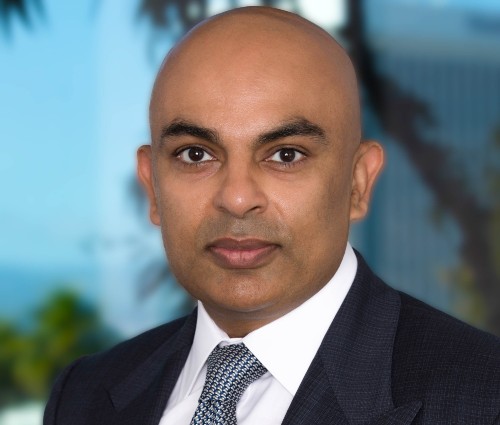The technology cuts log-in times by 70% and leverages other cost-saving cloud efficiencies.
A hybrid cloud architecture is slashing log-in times and optimizing IT costs at a Montage Health.
Led by Tahir Ali, chief technology officer and chief information security officer, the Monterey, California-based health system's virtual desktop infrastructure (VDI) initiative is saving $298,000 yearly in productivity gains by clinicians, as well as other infrastructure costs.
That figure, Ali says, comes from slashing the initial system log-in times of each clinician from 100 seconds to 30 seconds, helping to improve more than 100,000 patient visits annually, and also aiding in rapid response to emergent care situations.
"Some people call it agile infrastructure," he says. "Consumption-based IT is where we set up different infrastructure in a way where we can scale it very quickly."
In the background, the system creates Windows-based virtual machines only when a staff member logs in, with sessions remaining available for up to six hours after initial log-in. After clinicians log out or time out, the system deletes these virtual machines, leaving only the saved data residing in Montage servers. In between log-in and log-out, clinicians' desktops can follow them from workstation to workstation, instantly available with a swipe of their badges.
The system "makes sure [that] if we have ebbs and flows, we have enough capacity on demand to give," Ali says.

Tahir Ali, chief technology officer and chief information security officer at Montage Health. Photo courtesy Montage Health.
Such an arrangement is well-known to retailers dealing with surges in computing demand during peak buying seasons, but is relatively novel in healthcare IT, he says.
"I thought, why not do it for the hospital?" he says. "We have to have people physically in the hospital at a certain time vs. maybe the middle of the night. We can do the same thing in IT."
At the heart of Montage Health's data center is a refrigerator-sized data hardware appliance provided and maintained by Dell, which creates and maintains the APEX Private Cloud that manages the provision and release of computing resources to Montage Health staff.
For further scalability, the private cloud is connected via triply redundant 10 gigabit-per-second links to the internet, where Montage maintains public cloud 'pilot lights' at Amazon Web Services as well as Microsoft Azure clouds.
"I understand that running on the cloud is expensive," Ali says. "The key is running on the cloud pay-per-use. We have [a few] VDI sessions if somebody is working from home. If we need something, we start to build that [public cloud] stack."
In the event of a disaster, Montage Health can quickly scale up those public services to meet unexpected demand, Ali says.
"The pilot light is very cheap, and we are running it inside our data center," he says. "And you have to have a multi-cloud strategy. Each cloud vendor has its strengths and weaknesses."
Montage Health's specialized VDI infrastructure can also tap the private cloud's graphics processing unit (GPU) resources to help radiologists and cardiologists read images.
Beyond the improved clinician productivity, Ali says Montage Health's infrastructure saves money compared to traditional hybrid cloud architectures.
"The traditional way is, you have your VDI infrastructure fully blocked," he says. "You have a replica of at least 70% of the same capacity running on a 'backup data center.' All licensing, hardware, and support is twice as much, because you're running in two different places. We run it in one place."
This hyper-converged infrastructure depends upon the APEX Private Cloud's 80 gigabits-per-second backplane, which eliminates the need for cables to connect the servers operating in the private cloud. Additional FSLogix software from Microsoft, powered by Active Directory, allows individual clinicians' desktop profiles to be delivered to workstations when the clinicians log in, displaying only those applications required for each clinician's work, further boosting system efficiency. If they move to different workstations during their workday, those profiles and applications follow them from workstation to workstation.
A change in how Montage Health conducts video calls internally and externally played a role in the timing of the move to the new infrastructure last November.
"Skype was going to go away, and Microsoft Teams was going to come in, and our traditional hardware was not capable at that time to run Teams with a video," Ali says.
It also was a time of standardizing after employing a variety of video call technology across the enterprise.
"We wanted to converge into a single face of Montage," Ali says. "When patients come to our facility, it doesn't matter if it's ambulatory, the hospital, even our wellness center. It's a single company called Montage Health, and we will take care of them accordingly."
The new architecture also lends itself to a zero-trust data security strategy.
"We have a product that has a full trending of every single packet that goes from one place to another place," Ali says. "If there's any deviation, the flag goes up, and they take [devices] off the network automatically.
"I can bring the technology to a cutting edge. But the security needs to be a little ahead of that."
“I understand that running on the cloud is expensive. The key is running on the cloud pay-per-use. We have [a few] VDI sessions if somebody is working from home. If we need something, we start to build that [public cloud] stack.”
— Tahir Ali, chief technology officer and chief information security officer, Montage Health.
Scott Mace is a contributing writer for HealthLeaders.
KEY TAKEAWAYS
Virtual desktop infrastructure cuts log-in times from 100 seconds to 30 seconds.
Reduced log-in times translate into $298,000 in annual productivity gains.
Redundant 10 Gbps links to multiple public cloud infrastructure serve as disaster recovery infrastructure.
